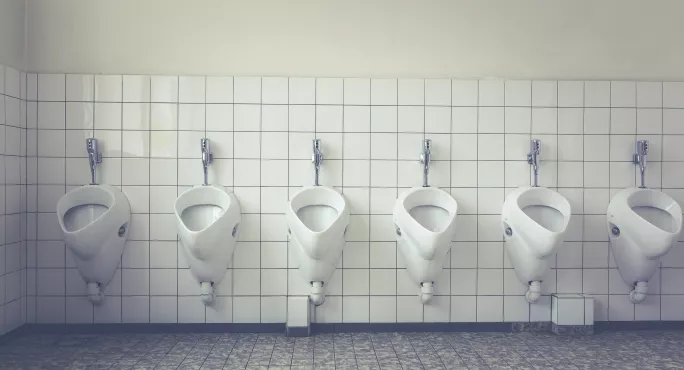The chances are that the words “school toilets” send a shudder down your spine. They were pretty unpleasant when we were kids.
They had broken locks, an ever-present fug of cigarette smoke, stinking urinals, overflowing ‘feminine hygiene’ bins, and, weirdly, it was where the bullies hung out, who made going for a wee a truly terrifying experience. And even when they weren’t in residence, there was another absolute horror to face: tracing paper bog roll.
Eventually, schools wised up and realised that making kids wipe their bottoms with something crinkly and water repellent was not the wisest move, but aside from that, school toilets don’t seem to have improved since then.
A quick poll of my Facebook friends revealed that their primary school-aged children all have an aversion to using the toilets in school. When asked why, the comments range from “they’re dirty and they’re always blocked” through to “people kick the doors open”. It turns out that the doors still don’t lock, they still aren’t cleaned regularly enough, and they are still the domain of bullies and troublemakers.
Things don’t seem to be any better in some secondary schools.
“Everyone vapes in there and they threaten you when you go in,” complains my friend’s 13-year-old daughter. “I try not to use them. If I really need to, I wait until lessons start and pretend I’ve just got my period so the teacher will let me go.”
Her friend doesn’t like using them either: “They’re disgusting,” she says. “People stick used sanitary towels to the wall and there’s never any toilet paper.”
It’s pretty grim that pupils still have to put up with these conditions. But does it really matter? An excellent education is hardly dependent on the state of the loos is it?
Yes and no. Obviously, the state of the school toilets doesn’t change the quality of the teaching and leadership of a school, but it affects pupils in other ways.
It appears that avoiding using the toilets at school is a regular occurrence. This means that some pupils are uncomfortable to the point of desperation during the school day, which can lead to accidents or even urine infections. And then you have a full bladder and can barely concentrate on anything else – fronted adverbials pale into insignificance when you’re desperate for the toilet.
Then there’s the issue of bullying: nobody should be ignoring breaktime toilet antics purely because they’re out of sight. Pupils should feel safe in every space within their school.
Dirty toilet facilities also affect our pupils negatively.
“What’s the point in making them wash their hands before eating if there’s nothing clean to dry their hands on?” complains a parent. “They use a filthy roller towel or wipe their hands on their dirty clothes. D and V spreads like wildfire around school and it’s no wonder.”
Unclean facilities lead to pupil absences through illness. Lost days at school mean less progress. We’re all keen to reduce absences, but we’re turning a blind eye to one of the causes.
Lisa Jarmin is a freelance writer.




